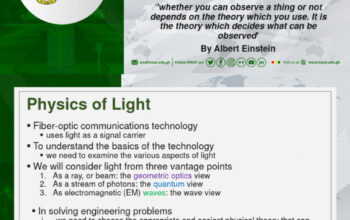The strong nuclear force, also known as the strong interaction or strong force, is one of the four fundamental forces in nature, alongside gravity, electromagnetism, and the weak nuclear force. It is primarily responsible for binding protons and neutrons together within atomic nuclei. Understanding the strong nuclear force involves delving into the complexities of particle physics, quantum field theories, and the intricacies of subatomic interactions. This article aims to elucidate the mechanisms of the strong nuclear force, with a focus on its fundamental principles, manifestations, and implications.
1. Fundamental Characteristics of the Strong Nuclear Force
The strong nuclear force exhibits several noteworthy characteristics that distinguish it from other forces. Firstly, it is significantly stronger than electromagnetism at short ranges, making it capable of overcoming the electrostatic repulsion between positively charged protons within the nucleus. However, this potent force operates over a limited range, approximately 1 femtometer (1×10-15 meters), beyond which its influence diminishes rapidly.
Secondly, the strong nuclear force is characterized by its dependency on the type of particles involved. It primarily acts between quarks, the fundamental constituents of protons and neutrons, mediated by particles known as gluons. This interaction is described by quantum chromodynamics (QCD), a theory that delineates how quarks and gluons interact through color charge, an entirely different aspect from the electric charge in electromagnetism.
2. Quantum Chromodynamics (QCD)
At the core of the strong nuclear force is quantum chromodynamics, which provides a comprehensive framework for understanding the interactions between quarks and gluons. In QCD, quarks possess a property known as color charge, which is analogous to electric charge in electromagnetism but comes in three types: red, green, and blue. Gluons, the force carriers of the strong force, are unique in that they also carry color charge, enabling them to interact with quarks and other gluons.
The exchange of gluons occurs due to the principle of confinement, which states that quarks cannot exist independently; they are perpetually bound within larger particles such as protons and neutrons. This confinement leads to a phenomenon known as asymptotic freedom, whereby quarks behave almost independently at extremely high energies, yet their interactions intensify drastically at lower energies.
3. The Role of Mesons
In addition to gluons, mesons—composed of a quark and an antiquark pair—play a crucial role in mediating the strong force between nucleons (protons and neutrons). When nucleons are in proximity, they exchange mesons, primarily pions, which serve as effective particles facilitating the attractive potential necessary for nuclear binding. This exchange process can be likened to the transfer of virtual particles that momentarily exist within subatomic interactions, thereby enabling stable nuclear configurations.
4. The Yukawa Potential
The mathematical representation of the strong nuclear force, particularly at the nucleon level, can be approximated by the Yukawa potential. This potential encapsulates the interactions between nucleons mediated by meson exchange. The Yukawa potential reveals how the strength of the strong force diminishes with increasing distance, underscoring the force’s short-range characteristics while also illustrating the attractive nature at play within the atomic nucleus.
5. Impact on Nuclear Stability
The strong nuclear force is fundamentally imperative for the stability of atomic nuclei. Without it, the electromagnetic repulsion among protons would lead to the disintegration of atomic structures. The delicate balance between the strong force (which acts to bind nucleons) and electromagnetic repulsion thus dictates the stability isotopes, governing their existence and prevalence within the universe.
As a result, understanding the social behavior of nucleons under the influence of the strong nuclear force grants insights into nuclear reactions, radioactivity, and the processes that fuel stars, including nucleosynthesis, where lighter elements forge into heavier ones under extreme conditions.
6. Applications in Modern Physics
The implications of the strong nuclear force extend beyond foundational physics, permeating into various applied fields. For instance, the principles of nuclear fission and fusion are predicated on manipulating the strong force to release substantial energy—a phenomenon harnessed in both nuclear power generation and thermonuclear weapons. Moreover, emerging research in nuclear medicine employs radionuclides, which exploit the strong nuclear force’s properties for diagnostic and therapeutic purposes.
Additionally, advancements in particle accelerators, such as those at CERN, enable scientists to probe the intricacies of the strong force, seeking to unlock enigmas surrounding quark-gluon plasma and the conditions prevalent in the early universe moments after the Big Bang.
7. Conclusion
The strong nuclear force is a fundamental aspect of particle physics, integral in shaping the structure of matter and the dynamics of the universe. By binding protons and neutrons via the exchange of gluons and mesons, and exemplified through quantum chromodynamics, this force underscores the intricate balance between attraction and repulsion at the subatomic level. Its applications, from nuclear energy to astrophysics, highlight the relevance of the strong force in contemporary scientific endeavors. As research continues to unravel the complexities underlying this potent interaction, the strong nuclear force remains a pivotal cornerstone in the quest to comprehend the universe’s fabric.










